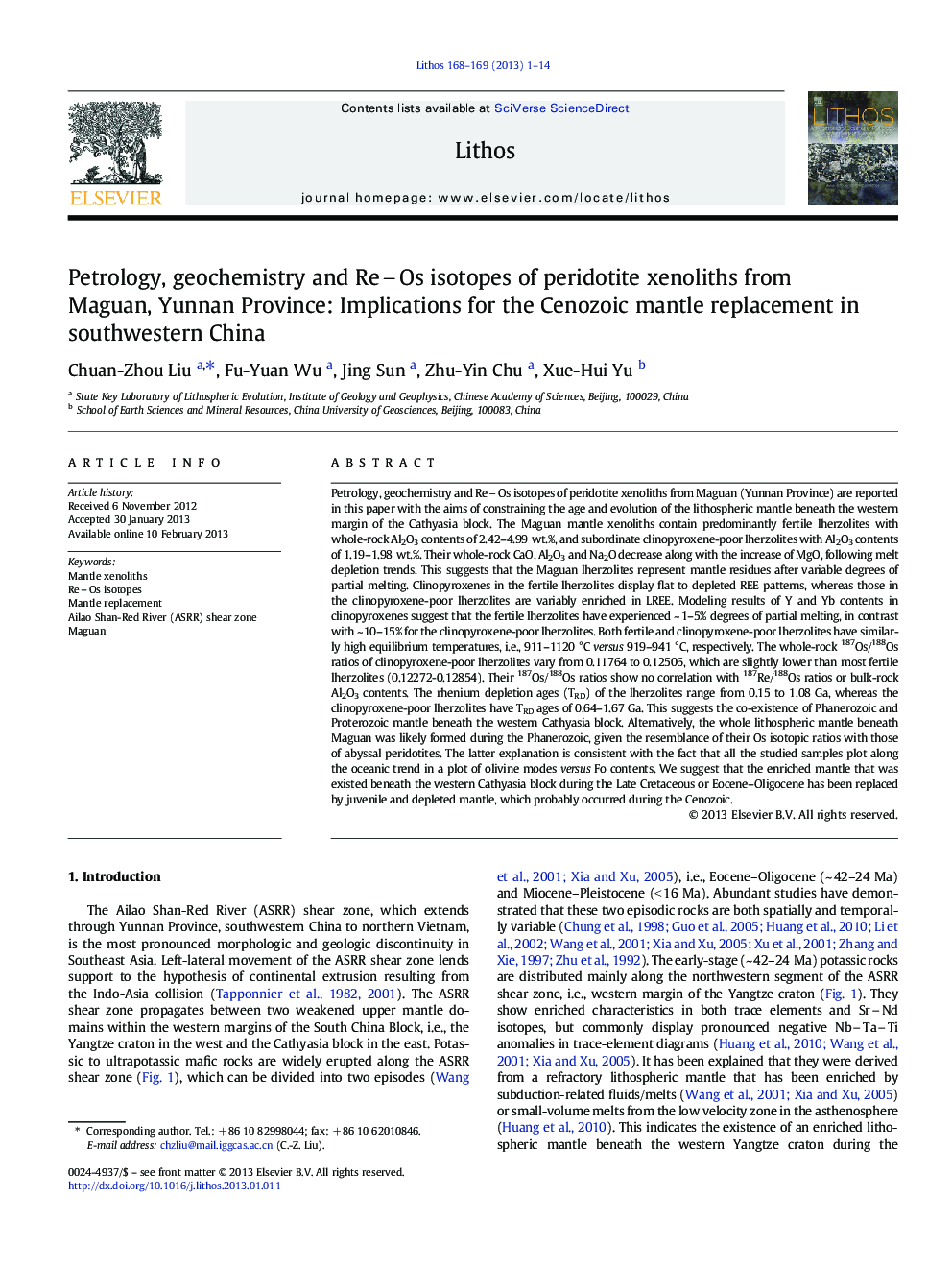| کد مقاله | کد نشریه | سال انتشار | مقاله انگلیسی | نسخه تمام متن |
|---|---|---|---|---|
| 4716305 | 1638693 | 2013 | 14 صفحه PDF | دانلود رایگان |

Petrology, geochemistry and ReOs isotopes of peridotite xenoliths from Maguan (Yunnan Province) are reported in this paper with the aims of constraining the age and evolution of the lithospheric mantle beneath the western margin of the Cathyasia block. The Maguan mantle xenoliths contain predominantly fertile lherzolites with whole-rock Al2O3 contents of 2.42–4.99 wt.%, and subordinate clinopyroxene-poor lherzolites with Al2O3 contents of 1.19–1.98 wt.%. Their whole-rock CaO, Al2O3 and Na2O decrease along with the increase of MgO, following melt depletion trends. This suggests that the Maguan lherzolites represent mantle residues after variable degrees of partial melting. Clinopyroxenes in the fertile lherzolites display flat to depleted REE patterns, whereas those in the clinopyroxene-poor lherzolites are variably enriched in LREE. Modeling results of Y and Yb contents in clinopyroxenes suggest that the fertile lherzolites have experienced ~ 1–5% degrees of partial melting, in contrast with ~ 10–15% for the clinopyroxene-poor lherzolites. Both fertile and clinopyroxene-poor lherzolites have similarly high equilibrium temperatures, i.e., 911–1120 °C versus 919–941 °C, respectively. The whole-rock 187Os/188Os ratios of clinopyroxene-poor lherzolites vary from 0.11764 to 0.12506, which are slightly lower than most fertile lherzolites (0.12272-0.12854). Their 187Os/188Os ratios show no correlation with 187Re/188Os ratios or bulk-rock Al2O3 contents. The rhenium depletion ages (TRD) of the lherzolites range from 0.15 to 1.08 Ga, whereas the clinopyroxene-poor lherzolites have TRD ages of 0.64–1.67 Ga. This suggests the co-existence of Phanerozoic and Proterozoic mantle beneath the western Cathyasia block. Alternatively, the whole lithospheric mantle beneath Maguan was likely formed during the Phanerozoic, given the resemblance of their Os isotopic ratios with those of abyssal peridotites. The latter explanation is consistent with the fact that all the studied samples plot along the oceanic trend in a plot of olivine modes versus Fo contents. We suggest that the enriched mantle that was existed beneath the western Cathyasia block during the Late Cretaceous or Eocene–Oligocene has been replaced by juvenile and depleted mantle, which probably occurred during the Cenozoic.
► Mantle xenoliths entrained in the Maguan basalts (ca 13 Ma) have fertile compositions.
► Whole-rock ReOs isotopes suggest that the Maguan mantle xenoliths are juvenile.
► Enriched lithospheric mantle beneath western Cathaysia block has been replaced by juvenile mantle.
► Mantle replacement probably occurred during the Early Miocene.
Journal: Lithos - Volumes 168–169, May 2013, Pages 1–14